How I Design My Wedding Gowns
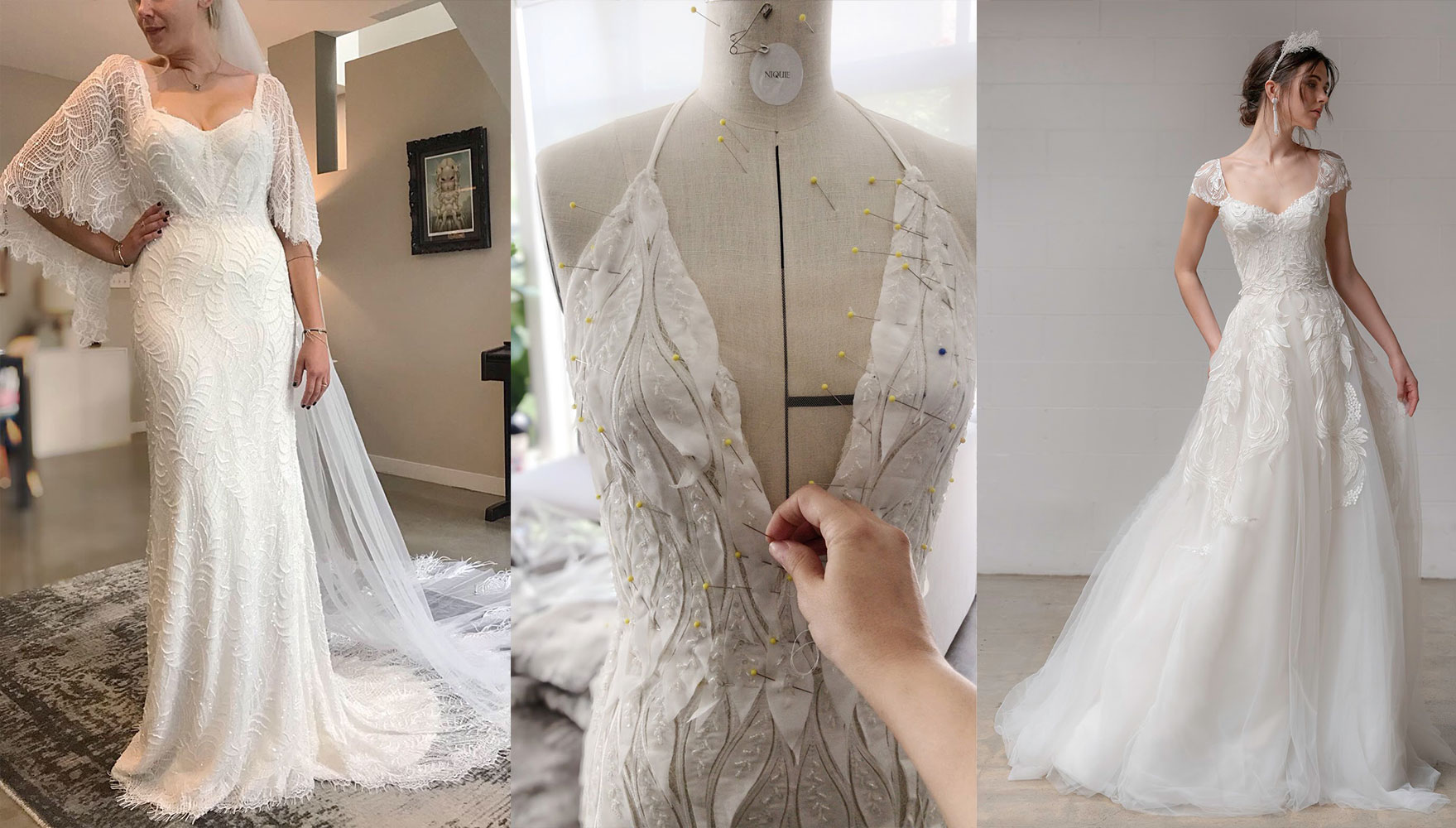
Most of my clients tell me they can’t put their finger on what style my wedding dresses are. They usually agree on some harmony of elegant, romantic and modern. But one thing that they all agree on is that all of my dresses are super delicate but very comfortable!
I’d like to share a few elements that let me achieve that style.
It might help you if you seek a future in designing wedding dresses.
I design my dresses from the base layer to top. It is basically like designing a cake.
You first start from the sponge, build a construction before layering it, add buttercream and then decorate.
The idea always starts with concepts or bundles of details and designs I like to apply to that season’s collection. Sometimes I have sketches, or just the little notes on details, fabric samples, clipped images of my inspirations.


The most important thing you need to know is how to build a strong construction underneath all of those delicate layers. A great fit of a corset is the biggest key in here.
The corset does not have to be sculpted out of marble or be made of a very strongly interfaced hard shell to achieve a good fit! On the contrary my corsets are comfortable because they are lightweight, some super sheer, and the strong ones are all handmade with silk fabrics and cotton interfacing, hence, they are all breathing.
So what makes them unique is a great pattern that I achieved by draping.
Easy but flexible fastening (no one wants to deal with lacing the corset if that is not part of the design — everything about that is complicated!), a great hard shell breast cup, especially in my strong corsets. During building my corsets I have a fitting with my client and correct any needed changes.

The silhouette of the skirt comes next.
Depending on the silhouette, I choose from A-line, Fit and flare, Mermaid, Trumpet, column, or Ball gown. Most of my gowns skirt designs are A-line, and Fit and Flare, and I have a few Trumpet, Mermaid or Ball gown, but rarely.


Next, I decide on how wide and how full I want the skirt to be.
Wider always means more layers, and more horsehair braids.
If I ever have to make a huge ball gown or anything wider than my usual A-line skirts that usually fall softly, it means more undergarments and construction of the petticoat. I do not carry ballgowns among my off the rack collection, I only make big skirts or ball gowns for private clients who order bespoke designs.
I only use tulles or Crinoline underskirts with horsehair braids or ruffles sewn onto underskirts to give the desired wideness for my skirt that sewn to the corset. For example:
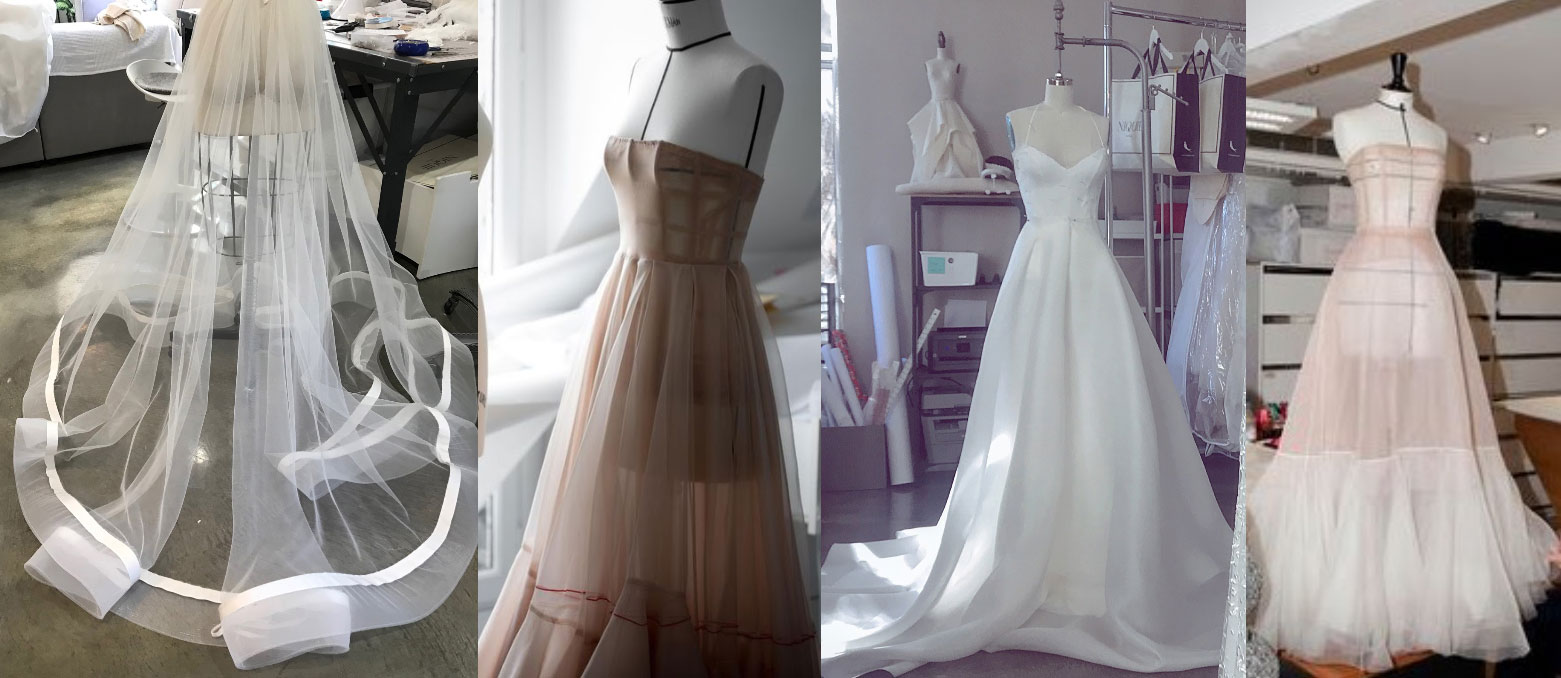
Anything beyond that means, separately worn underskirt, sewn as a wired or boned petticoat, which is not usually my silhouette. For example:

After building my corset and undergarments, I start adding the lining or tulles to my skirt. During this time I add a layer or layers to my corset and hand-sew on top of my corset.
Sometimes depending on design, I prepare bodice and skirt separately and attach them later together. For example:

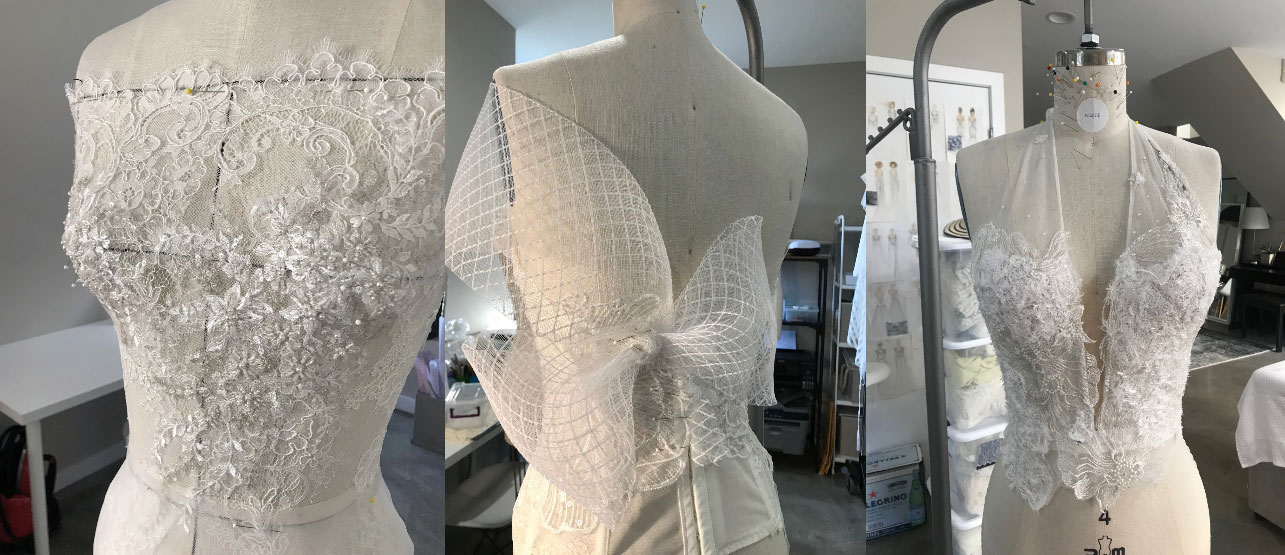
For the second time I will have a fitting session organized with my client and finalize the silhouette, the skirt fullness and finalize the lace and any embroidery that would be added. During this time I double check the neckline, sleeve or anything else if the design looks good on my client or needs to be changed. After fitting or needed alteration I proceed with adding laces, beading, embroidery and other design elements.
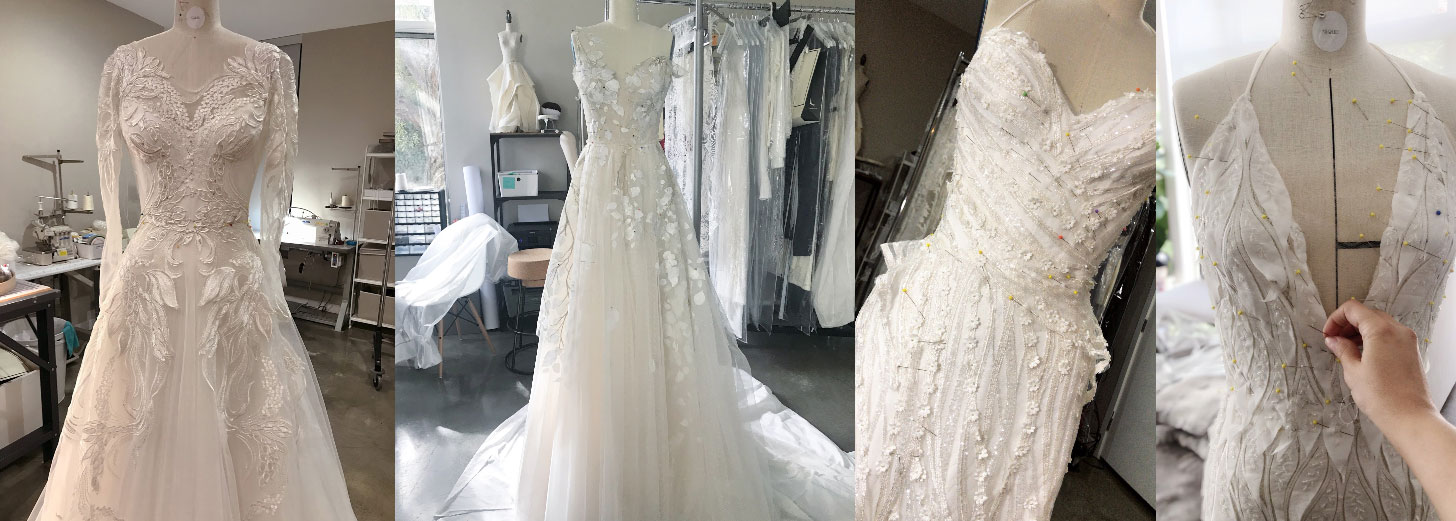

After the design, embroidery, beading etc are done, I finalize with finishing the hem, final touches before other needed accessories such as veil or else.
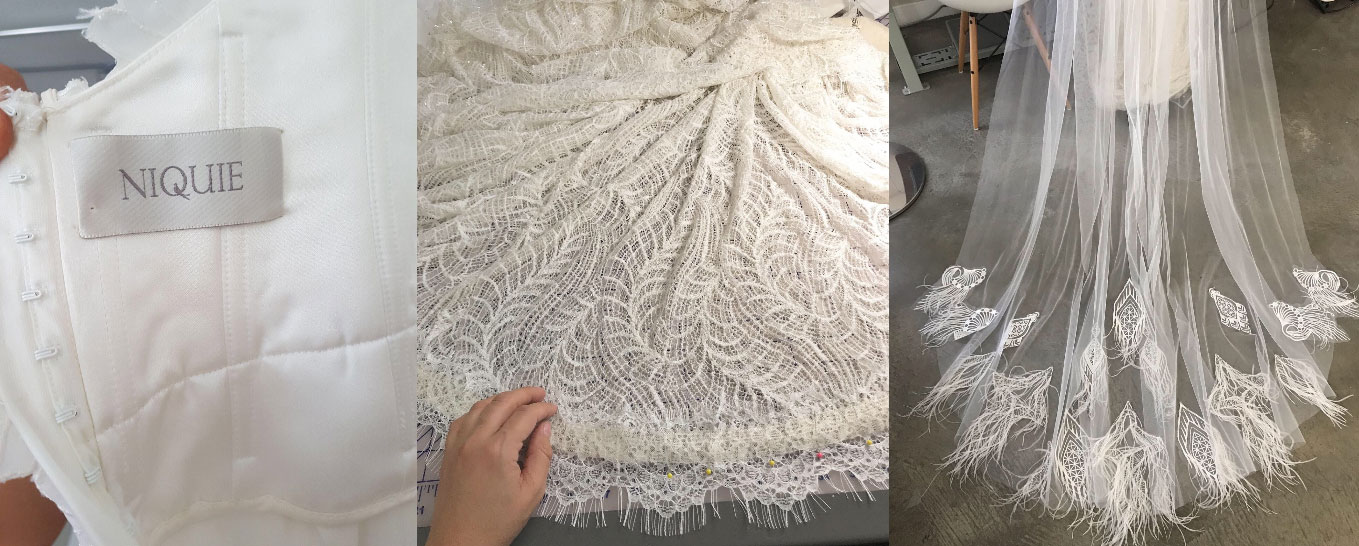
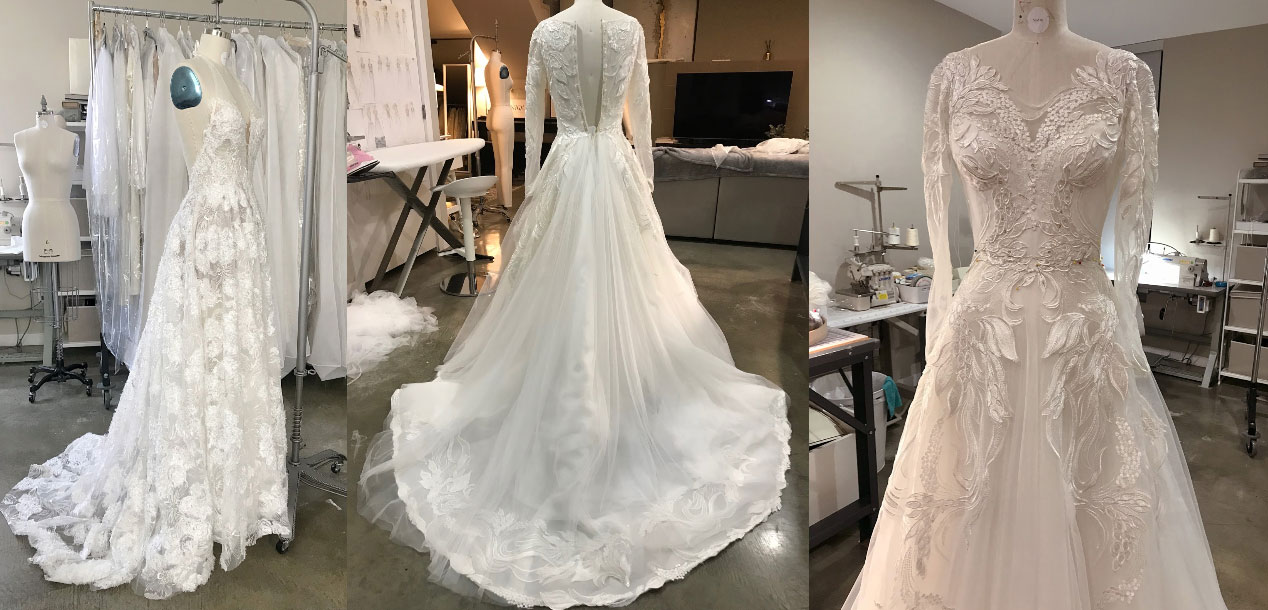
At last I deliver the whole gown with the last fitting with the client, or if it’s for the collection with my model. After that I would have a catalog or campaign shoot for the look with the whole collection!



